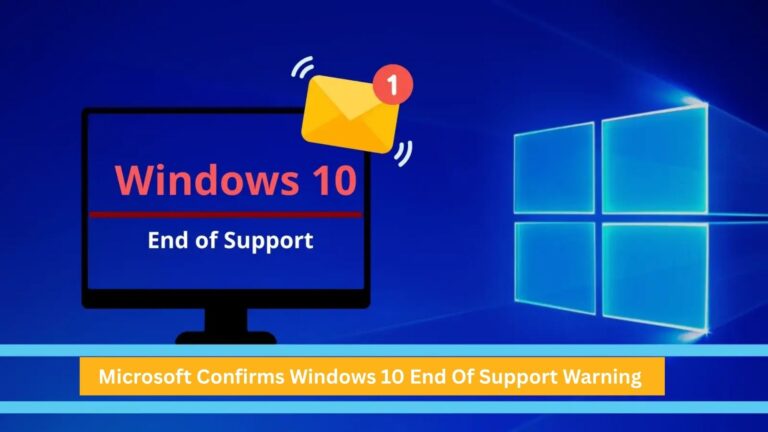By TECHYSTRIBES NEWS
In a move that has sent ripples through the tech world, Microsoft officially confirmed that Windows 10 support will end on October 14, 2025, marking the final chapter for one of its most popular operating systems. The announcement impacts over a billion devices globally, forcing users to make critical upgrade decisions in the coming months.
The Problem Facing Windows 10 Users
The end of Windows 10 support means millions of PCs will lose critical protection and updates.
Security Risks After Support Ends
Once the Windows 10 end of support date arrives, Microsoft will stop issuing free security patches, bug fixes, and technical support. While systems running Windows 10 will still function, they’ll become increasingly vulnerable to cyberattacks, malware, and zero-day exploits. Security experts warn that unsupported systems could quickly become a target for hackers seeking unpatched flaws.
The Guardian reports that users who continue using Windows 10 after the cutoff risk exposing personal and financial data to new threats. Without security updates, even everyday activities like web browsing or online banking could carry elevated risks, leaving consumers and small businesses dangerously exposed.
Millions Trapped on Older Hardware
Roughly 40% of global Windows users still rely on Windows 10, according to The Verge. However, many older PCs cannot upgrade to Windows 11 due to strict hardware requirements like TPM 2.0 and newer processor generations. This barrier could leave millions with an impossible choice: replace functioning hardware or switch operating systems altogether.
The BBC notes that the upcoming support cutoff may spark one of the largest waves of computer replacements in recent memory. Consumer advocates fear this could generate massive electronic waste, with older but capable devices prematurely discarded.
Why Microsoft Is Ending Support
Microsoft says it’s part of a planned lifecycle strategy designed to push forward innovation and tighter security.
A Shift to Modern Security Standards
Microsoft maintains that every Windows product follows a standard lifecycle, and Windows 10’s end of support aligns with that policy. The company says the move allows resources to focus on Windows 11 and future AI-powered features that meet modern cybersecurity needs. In a statement to The Verge, Microsoft said Windows 11 offers “advanced protection, built-in AI, and a stronger foundation for the hybrid work era.”
Tech analysts agree that the shift to Windows 11 represents a modernization of Microsoft’s infrastructure. However, many argue that the company’s rigid upgrade rules alienate users who cannot afford new hardware — creating a growing digital divide.
Extended Security Updates Offer Temporary Relief
To ease the transition, Microsoft is offering an Extended Security Update (ESU) program, which extends critical updates through October 2026. Eligible Windows 10 users can access this extension by linking a Microsoft account or through select subscription programs.
Ars Technica reports that the ESU extension provides one extra year of security patches, though some enterprise plans may extend further for a fee. However, experts caution that ESU is a temporary bandage, not a long-term solution, and users should still plan to migrate to a supported operating system.
How Users Are Reacting to the Announcement
Public reaction to Microsoft’s announcement has been swift and divided.
Consumer Frustration and Environmental Concerns
Many consumers feel blindsided by the Windows 10 end of support timeline, arguing that their PCs remain perfectly functional. Tech advocacy groups, including Consumer Reports, have called on Microsoft to reconsider, citing affordability and sustainability issues. “Millions of users will be forced to junk working machines just to stay safe,” one advocacy group stated.
Environmental experts also warn that the mass hardware turnover could worsen the global e-waste crisis. They urge users to explore eco-friendly alternatives, such as installing lightweight Linux distributions on older PCs rather than discarding them.
Businesses Brace for Expensive Transitions
For companies, the shift away from Windows 10 presents logistical and financial challenges. IT departments must manage large-scale upgrades, software testing, and employee retraining — all within tight deadlines. Business analysts at ZDNet estimate that migration costs could reach billions across corporate sectors.
Despite these hurdles, some enterprise leaders view the change as a necessary evolution. By standardizing on newer versions like Windows 11, businesses can take advantage of AI-driven security features, enhanced remote management, and better compliance tools.
What You Should Do Before the Deadline
There’s still time for users to take action — but the window is closing fast.
Upgrade to Windows 11 or Join ESU
If your PC meets the hardware requirements, upgrading to Windows 11 remains the best option. Microsoft provides a free upgrade tool that verifies compatibility and transfers data seamlessly. For those unable to upgrade, joining the Extended Security Update program offers an extra year of protection, but it’s a stopgap measure, not a permanent fix.
Experts recommend backing up your data before making any changes. In some cases, users can repurpose older PCs by installing alternative operating systems such as ChromeOS Flex or Ubuntu Linux, ensuring continued usability without added cost.
Plan Ahead and Stay Informed
Don’t wait until October 2025. As the Windows 10 end of support deadline nears, plan ahead to avoid downtime or data loss. Microsoft’s official support page and verified sources like The Guardian, The Verge, and BBC Tech will continue updating users on migration tools and future developments.
Conclusion
Microsoft’s confirmation of the Windows 10 end of support marks a defining moment in personal computing. For users, it’s both a warning and an opportunity — a reminder to evolve with technology before vulnerabilities strike. Whether you upgrade, extend, or explore alternatives, taking proactive action is now essential.
How will you adapt as the Windows 10 era closes? Share your thoughts and experiences below, and stay tuned for our upcoming deep dive: “Windows 11 vs Windows 10 — The Real Upgrade Story.”


